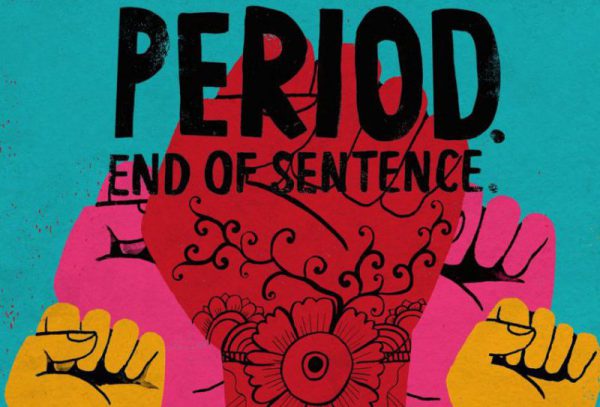Periods, chums, menses, menstruation, menstruum, catamenia, different names and of course different are the associated stigmas, dogmas, stories, and celebrations across different world cultures, religions, regions. Here is a humble attempt to explore some of them.
Menses, or menstruation comes from a root word that is related to Mene (Greek for moon) and derived from Mensis (Latin for month). This is logical as the usual chumming cycle is very close to 29.5 days for majority of females that is in turn a lunar month or cycle. There are many good reads on internet regarding the correlation or superimposition of catamenial phases over the lunar waxing and waning. The ovulation period is considered related to full moon and the menstrual phase is linked to new moon, seems logical.
“The researchers believe that light affects production of a hormone melatonin involved in regulating a woman’s monthly cycle and that a woman is most likely to conceive when the nights are at their darkest…the lack of light would have shielded amorous caveman couples from hungry predators.“
https://www.medindia.net/news/healthwatch/menstrual-and-lunar-cycles-may-be-linked-143205-1.htm#
Readers are encouraged to pursue further exploration.
As of today, many societies do not discriminate legally against women based on their being in menstruum. The Supreme Court of India opened the gates of Sabarimala temple in Kerala for the women of menstruating age. This was an end to a prohibitory ritual in place for ages. More feminist outlook of the modern societies lets the women to be part of mainstream even during “those days”. The credit for that partly goes to the media and internet for opening up the horizons for the women by making them increasingly aware of the “other women with modern rights” and remaining is due to the advent and marketing of female intimate hygiene products. However, in some societies, cultures, and religions (or sects thereof), a menstruating woman is still a pariah.

It is fascinating to look at the juxtaposed realities on this matter. On one hand, there are celebrations and festivals related to menarche in the different parts of the world. Odisha has a whole four-day festival called Raja Parba. Assam and north-east Indian states have Ambubachi, Tuloni Biya or similar festivals (with different names). South Indian states have festivals like, Half Saree Festival, Manjal Neerattu Vizha, Ritusuddhi or Ritu Kala Samskara. On other hand – there are societal, religious, and familial restrictions like, seclusion, untouchability, prohibition from partaking in religious ceremonies, restriction of movement outside home et al.
Wait a minute! Are these two realities really mutually contrasting? Or have they been perceived so? Let us examine.
The festivals mentioned above have some common and prominent themes. North-Eastern states of India celebrate some days of June as menstruation period of the Earth. The Bhudevi is considered akin to a girl going through her menses (in this case yearly) and then being ready for the new crops and cultivation. The rains in this case follow (or coincide with) these festivals. Other celebrations related to the “coming-of-age” of a female are related to pleasantly announcing this to the society. The young women are welcomed into the adulthood with a rite of the passage.
The restrictions! Let us try finding some logic in them. Seclusion and restricted movement would have been suggested to give the female a-little-much–deserved break and rest from household chores. Not being allowed in kitchen is a blessing where the female would usually be an unpaid cook for the entire clan (which is a tiring job!). Not being allowed to touch pickle as it will go bad? Simple logic would be to deter the females (especially young girls) from eating tamsik and pungent food. The fact that there is a blood loss and body is weak is not at all a point of argument, I believe. Being given separate utensils and satvik food is a good break from usual “heavy to digest” food and is hygienic.
No worship and not being allowed inside the temples? When a woman is not allowed to do anything that requires physical efforts, excusing her from something “mandatory” as religious rituals is a welcome step. Logic here is that the old temples were not built randomly at any place. They usually had (still do) a hard approach – hilly terrain, steps, or narrow entrances. They were built on places of “high” natural energies. Not to mention that one needs to bow down while entering and do a dandwat pranam once inside. Consider doing this with menstrual cramps, bleeding (in the absence of sanitary items), and a weak body, both emotionally and physically! Weak body is not an apt vessel to absorb the high energy vibrations. It may not be a coincidence after all to have experienced goose bumps while some aarti or ritual is going on in a place of worship. We all might have experienced the energy fluctuation in our bodies in and around such places.
Untouchability? Imagine the situation of women in old traditional households where she must do most of the work. In her periods – when she cannot cook or do any outdoor chore – she would very easily be converted into a domestic courier person, passing on things and moving items from here to there. In that perspective, it is a good riddance to be considered a “untouchable” during chums and get some rest. The most important logic behind this practice could be an excuse to be away from “unwanted and unwelcome sexual advances”. It is not a secret that women usually would not have say (let alone consent) in sexual encounters in India (and traditionally world over as well). What is better than being an outcast while menstruating and not being obliged to “serve” the men sexually? Apparently, a small price to pay for a deserved “sexual abstinence”.
Most of the mentioned rituals end with a ceremonial bath with application of Neem, turmeric, and sandalwood paste. Neem is a natural disinfectant. Turmeric is a natural antifungal, antiallergic and antiseptic. Sandalwood is a natural aromatizing agent. An ancient form of spa after a long tiring “journey”. Seems quite apt and a blessing (in disguise may be).
To conclude, it is a beautiful and natural journey in which the body self-cleanses itself. Gives a chance (yet again) to the woman to be able to procreate. One thing that only a female can do. Given all the jokes around chums, inconsideration around Pre-Post-MS, the prohibitory rituals, bodily cramps, and emotional upheavals, menstruation is going to be here, PERIOD!
A little change in perspective and more understanding in both (especially) men and women can go a long way.
Happy chumming and celebrate your womanhood!
P.S – Raja Parba is around the corner, 15-18 June 2020. So is Ambubachi from 22-26 June. Monsoon has already knocked the doors.
Please do share your inputs/comments/feedback and experiences around the topic (or not so around as well). Connect with the FlawedOne on Instagram/Twitter/Gmail.


